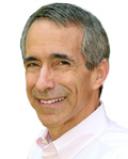
Sleep
The Electronic Sleep Diet
New ways to slim down on night-time electronics—and lose weight
Posted March 19, 2015

Diets are not just about food. To control weight you need do much more than control food intake. Sufficient rest is a requirement—sleep less, weigh more. But people tell me all they time that they’re “too jazzed up” to sleep. They can’t calm down. One major reason is their surrounding electronics—the monitors and televisions pumping out arousing light and the cellphones that ping in the night. To lose weight, you need to rest. To rest, you need to slim down on nighttime electronics.
But how? Consider these propositions first, then some advice on what to do next:
1. Light is a drug. It resets biological clocks, kicks up natural killer-cell activity, arouses and awakens, increases exercise-produced muscle mass, improves mood, treats depression—and that’s just a partial list. The nighttime light bopping off your TV or the biological clock shifting blue light coming off your cellphone—or just the blue tints flowing off Bill Clinton’s official portrait—will reset your inner clocks. That changes melatonin levels and sleep architecture in ways that rarely benefit you.
2. Rest is necessary for regeneration. Yeah, you need sleep to prevent colds and heart attacks, improve mood, and remember all those computer passwords. But the real reason for rest is that without special time to regenerate, your body cannot and does not properly rebuild. The right rest is critical to health.
3. Aroused folk don’t sleep. You may love that thrilling action movie/TV show/video, but do you really want to watch it right before bed? The latest development in insomnia research is the realization that insomniacs maintain parts of the brain “awake” while in sleep mode. Does it excite you to be partially awake while you sleep?
4. Rest is a skill. People learn meditation over decades. Self-soothing is important and teachable, as are cognitive techniques.
Sleep used to be as normal as breathing. For meditators, it still is. But with electric lights, electronics, and the growing Internet of things, people work with machines so much that they think they are machines. Guess again.
You don’t want to be a machine. And these days people have to relearn the most basic skills—like how to listen to their inner thoughts.
5. All our senses need to be used. Today electronics emphasize vision and hearing. But what of touch, feel, smell? How often do people put together all their senses as techniques to improve rest?
It’s time to make a new kind of sleep ritual—the sensory kind.
Towards a Sensuous Sleep Ritual
Most programmatic advice about sleep is to turn things off rather than on. People rest better when electronics are pulled off an hour or two before sleep. Standard general advice for those hours is to keep lights low; read books you should have read in high school, or listen to music from centuries earlier. The follow up: Floss and brush the teeth, take a really hot bath, turn down the bed.
But why not use your basic senses to more comfortably and easily fall asleep? You just need to do it internally.
Sleep usually includes many episodes of dreaming. Don’t you want to influence those dreams? Find calming rest and potentially program what you think about at night?
You can do so sensuously—using memory, imagination, and the most magnificent machinery available to you—your own brain.
Some examples:
A. Relive your favorite hike footfall by footfall, recalling the melodious calls of birds at evening, the smooth-textured bark of a flowering tree, pond ripples as a large bass plays just beneath the surface.
B. Swim through tropical seas, touching the sea grass, paddling after iridescent blue and green fish while trying to understand a porpoise’s cry.
C. Hear your favorite concert again, discovering all the different voices while watching the audience observe the players.
D. Recall your favorite painting and travel through it inch by inch, section by section, doing what you never can try a museum, touching the cracks and edges of the paint surface, smelling the strange amalgam of varnish and linseed oil—and seeing it again through different sequences of bright light, raking light, and shadow.
Whether it's art or music, nature or the city, memory can be invoked—and as it always is upon recall, reinvented. To help yourself fall asleep you have a choice. Rather than consume you can create: your own pictures, your own people, your own paintings, your own stories. All as a prelude to regenerative rest.
Nice way to control weight, too.



